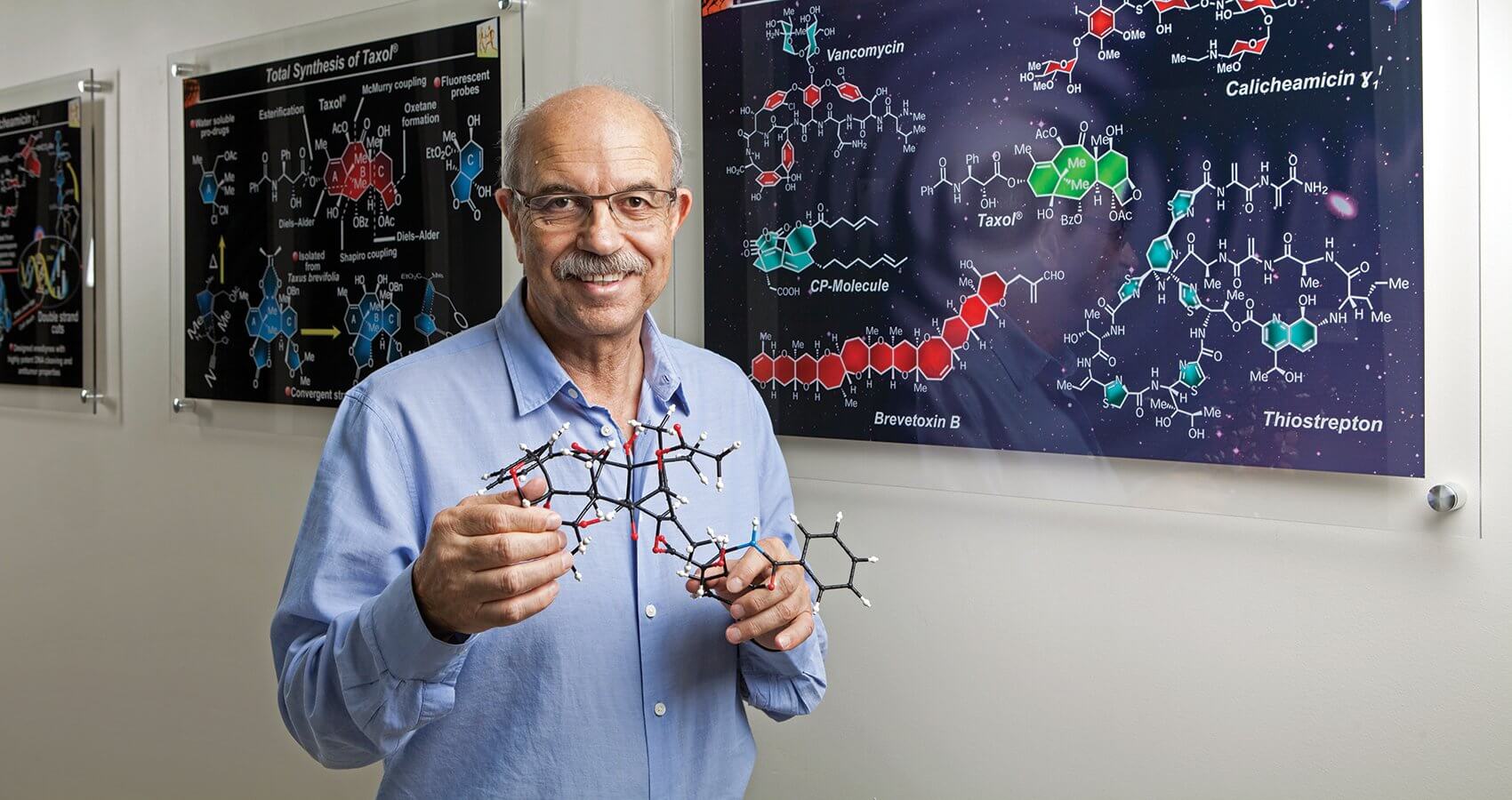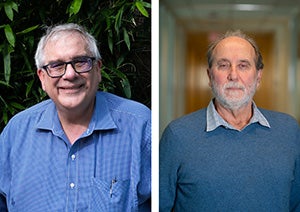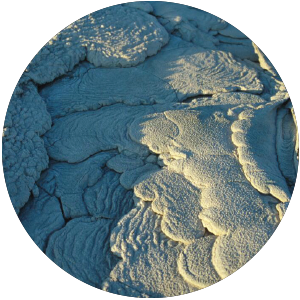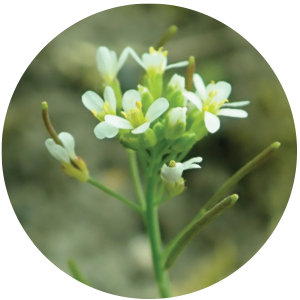Quantum Leaps
Research briefs from the Wiess School of Natural Sciences
Spring 2024
By Jade Boyd, Lynn Gosnell, Silvia Cernea Clark
The Wiess School of Natural Sciences sees the universe as its laboratory. Intense curiosity drives its students and faculty members to discover the unknown, from hunting the smallest subatomic particles to investigating the unfathomable distances of our universe — and scientific inquiries at every scale in between.

“A modern alchemist”
Among his many accolades, organic chemist K.C. Nicolaou has been lauded as “the world leader of the present generation in the field of total synthesis” (Wolf Prize, 2016) and “a modern alchemist” (Benjamin Franklin Medal, 2011). In presenting the Wolf Prize, the award committee wrote: “He has shown, like nobody else, how to strategically disconnect complex molecules into fragments leading to realizable chemical pathways. This strategy represents a conceptual leap that has been emulated by many others and has broken a ‘glass ceiling’ in the art of synthesis.” Nicolaou’s successes include the syntheses of anti-cancer drugs Taxol and calicheamicin and the immunosuppressant rapamycin — and many other compounds of critical value for both direct medical applications and further research. — Lynn Gosnell

"I am driven to contribute to the theory of high-temperature superconductivity. This is my gift to the planet Earth." — Randy Hulet
Hulet is determined to use laser-cooled lithium atoms to create something that’s eluded physicists for over 50 years — experimental proof of an exotic, one-dimensional state of matter where magnetism and superconductivity coexist. The link between magnetism and superconductivity is befuddling but real. They don’t coexist in conventional superconductors, but a wealth of evidence suggests magnetism is vital for some important forms of high-temperature superconductivity. Hulet’s team is building a quantum simulator that uses ultra-cold lithium atoms as stand-ins for the electrons that carry super currents and beams of light to hold them in single-file lines. — Jade Boyd
Predictive design of quantum materials
In virtually all the materials we encounter in our daily lives, researchers need not consider the quantum realm to understand key properties like strength and conductivity that are necessary for design and engineering. Quantum materials are those where quantum interactions take center stage. The underlying physics in most quantum materials is still debated, but Rice physicist Qimiao Si has won a prestigious Vannevar Bush Faculty Fellowship from the Department of Defense to pursue a groundbreaking theoretical framework for the predictive design of quantum materials with properties useful for quantum computing. Si says the project could lead to other “novel platforms for quantum functionality, like quantum sensing and quantum information processing.” — JB

Pursuing new questions and new materials
As director of the groundbreaking Rice Center for Quantum Materials, physicist Emilia Morosan is leading a mission to make Rice an international hub for fundamental research around quantum materials. In the process, she is expanding research collaborations among Rice faculty, postdocs and students via workshops, conferences and residencies for distinguished scientists. — LG

Discovering the keys to life
At the Center for Theoretical Biological Physics, co-directors and senior scientists Peter Wolynes and José Onuchic have been innovating on the frontiers of physics for more than 20 years. The center brings together methods from physics, mathematics and chemistry to understand biological problems and develop new theoretical physics from studying these complex living systems. For example, the center’s researchers are exploring new approaches to studying DNA. In a recent study, instead of focusing on chromosomes as linear sequences of code, scientists looked for clues on how their folded 3D shapes might determine gene expression and regulation. For most living things, threadlike chromosomes fold to fit inside the nuclei of cells in one of two ways. But the chromosomes of the Aedes aegypti mosquito, which is responsible for the transmission of tropical diseases such as dengue, Zika and yellow fever, defy this dichotomy, according to Onuchic. “Understanding DNA is a key to understanding how life works,” Wolynes says. — Silvia Cernea Clark

Furthering excellence
Mathematician Chelsea Walton has been awarded the fourth annual American Mathematical Society Claytor-Gilmer Fellowship, which aims “to further excellence in mathematics research and to help generate wider and sustained participation by Black mathematicians.” Walton is an expert in the fields of noncommutative algebra, quantum symmetries, Hopf algebras and their variants/quantum groups, as well as representation theory. The fellowship was founded in 2021 and named after William Schieffelin Claytor and Gloria Ford Gilmer, the first African American man and African American woman, respectively, to publish a research article in a peer-reviewed mathematics journal. — LG

Rings of fire
Stars, planets, volcanoes and mantles — the systems that occupy the mind of earth scientist Rajdeep Dasgupta are either way out in space or deep in Earth’s core. A unifying theme of his research is the study of life-essential volatile elements — like nitrogen, carbon and sulfur. “Those elements are supplied to the surface of planets by volcanic and tectonic processes — and also during planet formation. We’re looking at how the elements are stored and distributed across different reservoirs in the planet,” he says. As a “comparative planetologist,” Dasgupta studies the conditions that make planets fundamentally different. “We still don’t understand a lot about our own planet Earth and its interior.” An adjunct of this research is the study of different chemical properties of magmas across Earth’s volcanoes. In fact, a new research project to study carbonatites, a rare type of igneous rock that holds most of our planet’s rare earth elements, is getting underway. — LG
480,000 : NUMBER OF DEATHS IN 2020
The global toll of breast cancer that metastasized to the bones
Drugs called immunotherapy checkpoint inhibitors have dramatically improved breast cancer treatment in recent years by blocking proteins that cancer cells use to evade attacks from the immune system. Unfortunately, these traditional inhibitors don’t work well in bone, which is an immunosuppressive environment. So Rice chemist Han Xiao and colleagues looked for a new checkpoint target that was prevalent in bone and found Siglec-15, a protein molecule that suppresses the immune system by engaging with sugars. Pilot tests of an antibody therapy blocking the binding of Siglec-15 and sugars were effective against metastatic breast cancer tumors in animals, and Xiao and colleagues have started a company to develop a drug for human use. — JB

The plant lab
Of late, plant geneticist Bonnie Bartel has dissected the regulation of the growth hormone auxin, discovered specific functions of several plant microRNAs, and elucidated the structure and role of peroxisomes — basic cellular structures common to most life forms. The model organism for this research is the flowering plant Arabidopsis thaliana, or thale cress, which is one of the “white mice” of the plant research world. In 2023, Bartel and Rice postdoc Melissa Traver published their findings on the cellular processes that unfold during Arabidopsis germination. The study reveals how peroxisomes collaborate with lipid droplets to fuel seedling growth. As an added twist, the research points to corresponding mechanisms in human cells. — SCC
